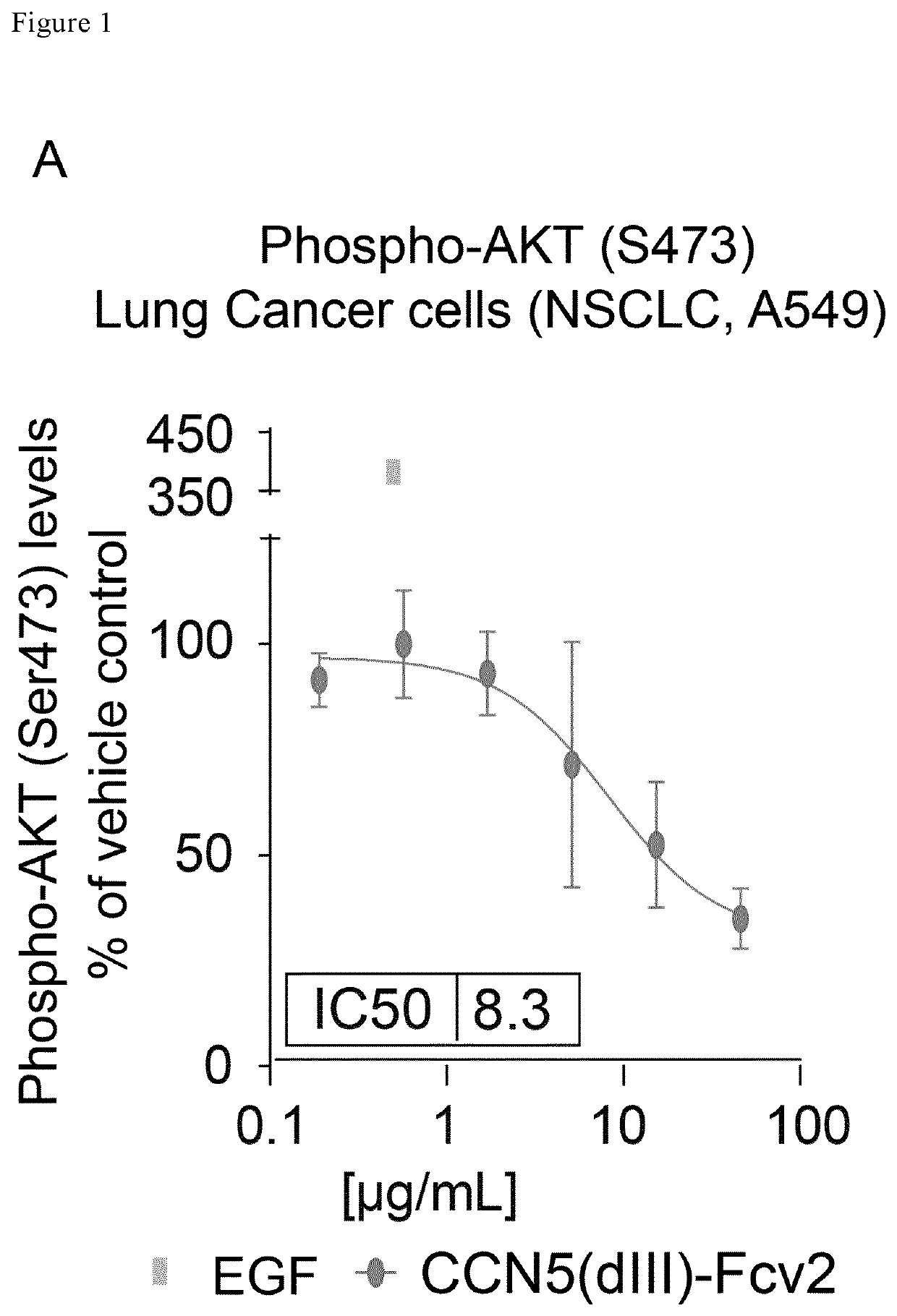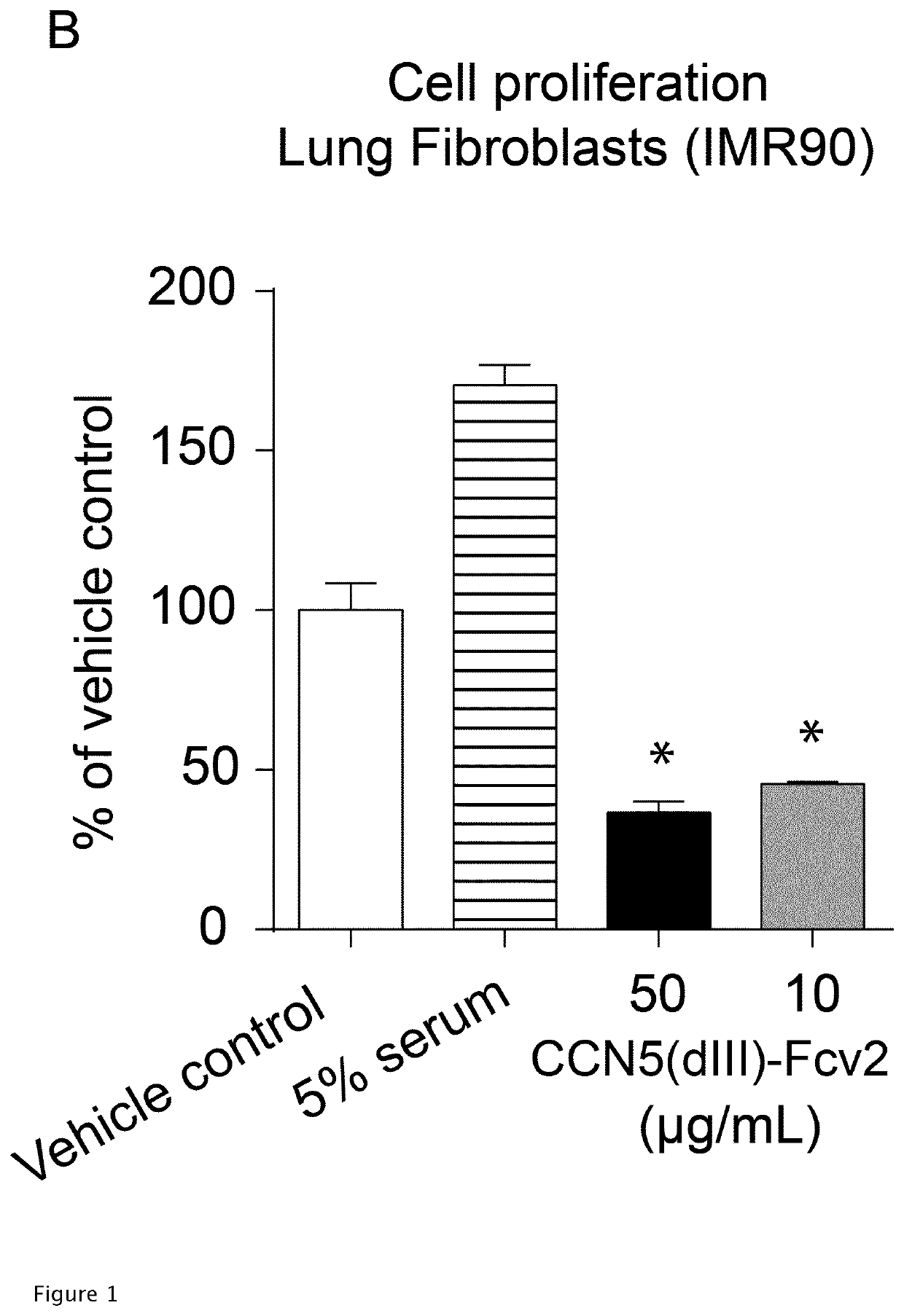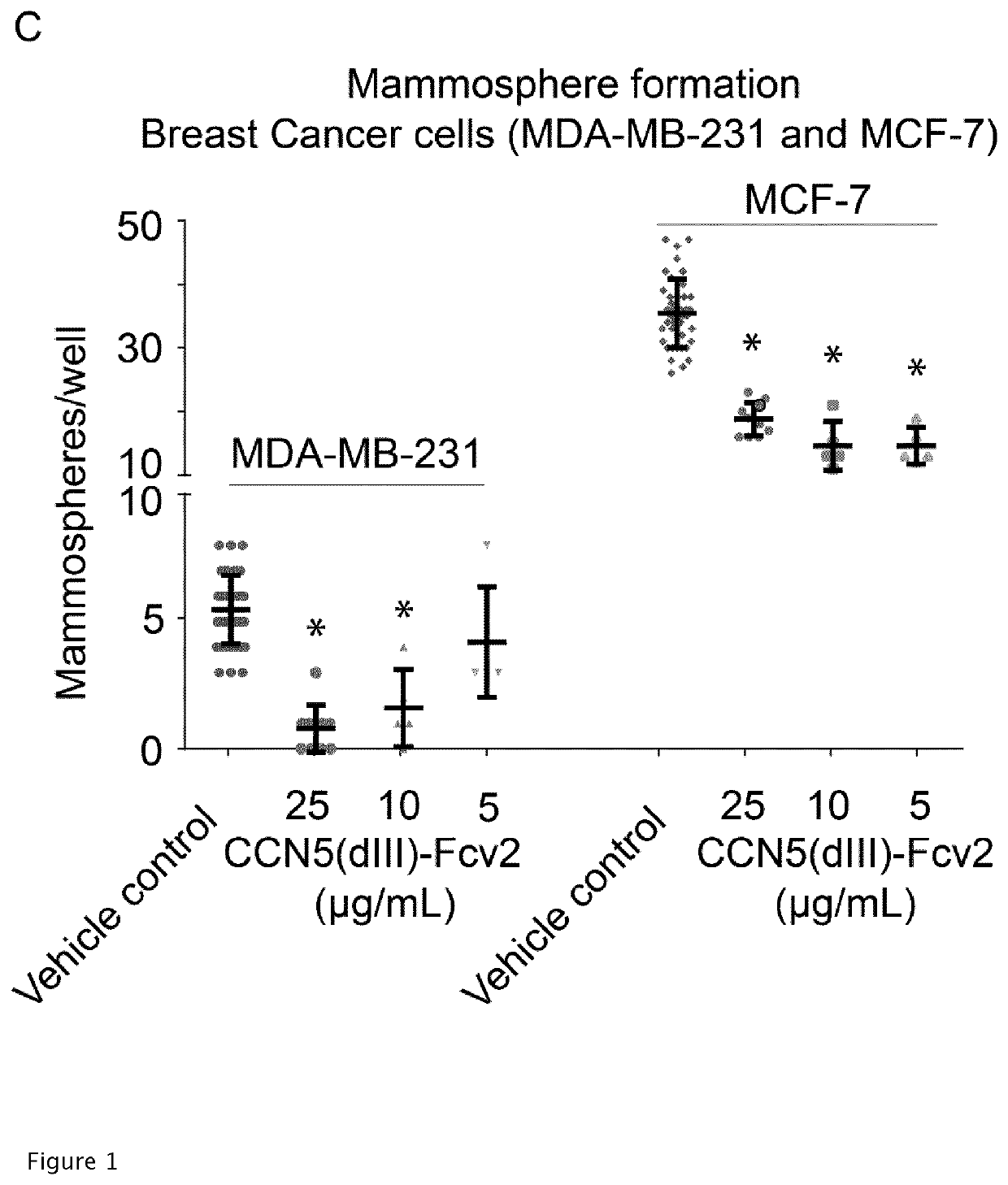Recombinant ccn domain proteins and fusion proteins
a technology of fusion proteins and ccn domains, applied in the field of recombinant proteins, can solve the problems of unpredictable pharmacokinetics and pharmacodynamics, and the actions of ccn proteins are reported to be susceptible to antagonizing effects, so as to reduce the capacity of activating immune effector functions, avoid immune effector functions, and reduce both yields
- Summary
- Abstract
- Description
- Claims
- Application Information
AI Technical Summary
Benefits of technology
Problems solved by technology
Method used
Image
Examples
example 1
Expression of a Fusion Protein According to the Invention
[0234]In this example, the providing of a fusion protein comprising amino acid 194-246 of CCN5 (SEQ ID. No. 1), fused N-terminal of a peptide linker (SEQ ID No. 20) and Fc-fragment of IgG, IgG4 subclass of SEQ ID NO. 15 (S228P, F234A, L235A, K447-, Eu-numbering) (CCN5(dIII)-Fcv2) (i.e. a fusion protein according to SEQ ID. No. 28) is described. The fusion protein was further appended with an N-terminal signal sequence originating from albumin of SEQ ID No. 32 and was expressed in mammalian cells as disclosed below.
[0235]The DNA sequence shown in sequence SEQ ID No. 36 was synthesized and sequence verified by a commercial supplier. The synthesized sequence was recombined with pDonrZeo by BP Gateway recombinase cloning to generate an Entry vector. Following transfection of competent E. coli mutated to allow for efficient propagation of plasmids (One Shot Top10™ cells), the entry vector was isolated with standard plasmid isolatio...
example 2
[0240]A DNA sequence encoding a fusion protein comprising amino acid 194-246 of CCN5 (SEQ ID. No. 1), fused N-terminal of a peptide linker (SEQ ID No. 20) and an Fc-fragment of IgG, subclass IgG4 of SEQ ID NO. 15 (S228P, F234A, L235A, K447-, Eu-numbering) (CCN5(dIII)-Fcv2) was expressed in order to produce a recombinant protein according to SEQ ID NO. 28.
[0241]The obtained protein was tested for its ability to inhibit prosurvival signaling (Serine-473 phosphorylation of AKT) in A549 human lung cancer cells (FIG. 1A). Tissue cultured treated Corning Incorporated Costar® 96 well sterile polystyrene plates were coated with fibronectin (Sigma Cat #F1141 diluted to 10 μg / mL in BioWhittaker® Dulbecco's phosphate buffered saline (Lonza Cat. No. 17-512F, hereafter refered to as PBS)). The coating solution containing fibronectin was distributed to the wells at a volume of 100 μL / well, incubated for 1 hour at room-temperature followed by decantation of the coating solution, 100 μL of PBS was ...
example 3
[0242]A DNA sequence encoding a fusion protein comprising amino acid 194-246 of CCN5 (SEQ ID. No. 1), fused N-terminal of a peptide linker (SEQ ID No. 20) and an Fc-fragment of IgG, subclass IgG4 of SEQ ID NO. 15 (S228P, F234A, L235A, K447-, Eu-numbering) (CCN5(dIII)-Fcv2) was expressed in order to produce a recombinant protein according to SEQ ID NO. 28.
[0243]The obtained protein was tested for its ability for inhibiting pro-fibrotic TGF-β-stimulated transcription (from SMAD2 / 3 binding cis-elements) in IMR90 human lung fibroblasts. (FIG. 1D). The assay was performed technically as described in Kaasbøll et al. (2018) supra, with the exception of the utilization of 2500 IMR90 lung fibroblasts / well in place of Rat2 cells. The proteins used for stimulation were as indicated in FIG. 1D. The IMR90 cells were sub-cultured as described for the A549 cells prior to use, supra. The IMR90 cells were used prior to passage 20, i.e. prior to reaching replicative senescence.
PUM
| Property | Measurement | Unit |
|---|---|---|
| length | aaaaa | aaaaa |
| affinity | aaaaa | aaaaa |
| adhesion | aaaaa | aaaaa |
Abstract
Description
Claims
Application Information
 Login to View More
Login to View More - R&D
- Intellectual Property
- Life Sciences
- Materials
- Tech Scout
- Unparalleled Data Quality
- Higher Quality Content
- 60% Fewer Hallucinations
Browse by: Latest US Patents, China's latest patents, Technical Efficacy Thesaurus, Application Domain, Technology Topic, Popular Technical Reports.
© 2025 PatSnap. All rights reserved.Legal|Privacy policy|Modern Slavery Act Transparency Statement|Sitemap|About US| Contact US: help@patsnap.com



